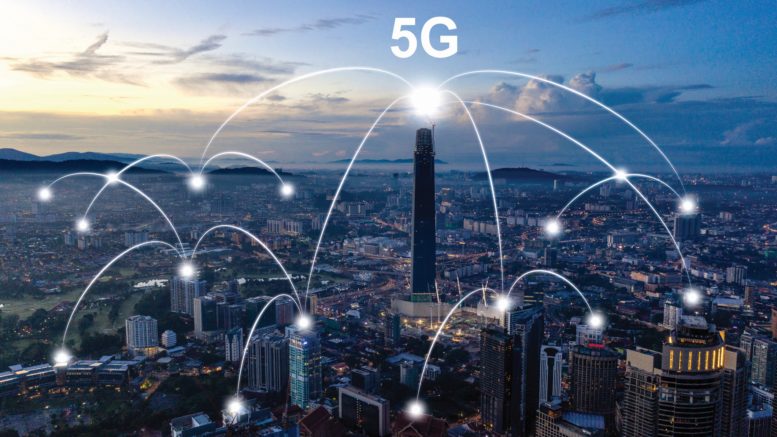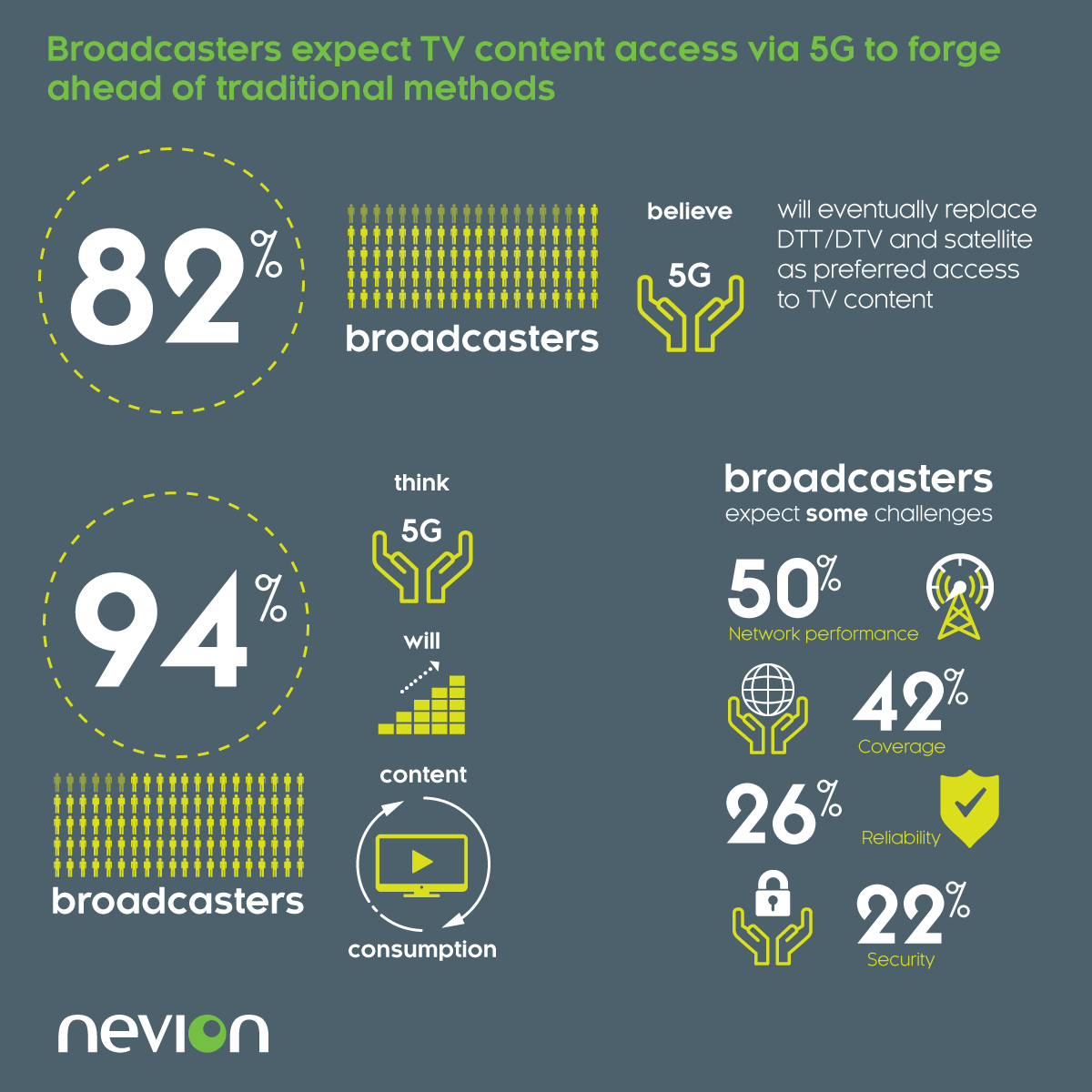Nevion: Broadcasters Think 5G Will Replace Broadcast
Survey says most think changeover will begin within the next 1-2 years

OSLO, Norway—Nevion, a provider of networking technologies for communications providers, has released a global survey of broadcasters that says 82% believe that cellular networks like 5G will eventually replace traditional broadcast distribution like DTT/DTV and satellite as the preferred way to access TV content, with over a third (37%) of these respondents expecting this to begin happening within one to two years.
The company says the research was conducted by OnePoll on behalf of Nevion, and polled 225 broadcasters across Europe, Australia, China and Northern America with the aim of understanding how they envision using 5G and their perceptions of the technology.
The results are from a survey Nevion reported on in June that said more than 90% of broadcasters surveyed expected to adopt 5G technology over the next several years.
Ten percent of those surveyed anticipate that it will take more than three years for 5G to overtake traditional services but the vast majority (94%) of broadcasters agree that 5G will likely increase the consumption of content. Nevion said that as increasing numbers of people favor streaming over conventional linear television delivery, the capabilities of 5G will help to cater to this audience and the demand to be able to stream content on the go.
With 5G set to enable viewers to stream live content on any connected device no matter where they are, Andy Rayner, chief technologist, Nevion, said, “5G technology can potentially deliver OTT broadcast services with the quality required not only for mobile devices, but also for TV screens at home. This could mean, as our research uncovered, that 5G is eventually likely to usurp DTT for consumers at home as well as on the move. In the long term, it is likely that 5G mobile technology could become the standard means to deliver terrestrial television. However, it is expected that both DTT and 5G delivery (when ready) will co-exist for a reasonable time.”

Nevion noted that “there are clear shortcomings with the current capabilities of mobile technology compared to DTT, which is highly optimized for power-efficient digital linear broadcast distribution and that there is also a key distinction between the potential of Service Provider offerings for broadcast media consumption and the use of the 5G radio technology to provide future real-time broadcast distribution capability.”
These views regarding 5G as the primary means of distribution of TV content are reflected in the research findings. Half (50%) of the broadcasters surveyed think the biggest challenge of using it will be network performance issues and coverage issues (42%). This is followed by issues with reliability (26%) and network security (22%), as well as some broadcasters expressing concern about the environmental impact of 5G.
Get the TV Tech Newsletter
The professional video industry's #1 source for news, trends and product and tech information. Sign up below.
Rayner concluded, “Ultimately, we are only just scratching the surface of 5G, and although broadcasters already see its potential value, at this stage industry-wide explorations into the technology are ongoing. It is too soon to say exactly at which point in the broadcast chain 5G will provide the most value. As such, broadcasters currently delivering with DTT will need to work with experts to follow the evolution of 5G broadcast capability.”
